
The First World War, also known as the Great War, was one of the deadliest conflicts in human history. It lasted from 1914 to 1918 and involved millions of soldiers and civilians from around the world.
Despite its importance and the extensive coverage it received at the time, much of the imagery we have of the war is in black and white.
However, this article has shed new light on the conflict by showcasing rare color photographs from the era.
The article features a series of stunning photographs that capture the essence of the First World War.
From soldiers on the front lines to civilians struggling to survive, the images provide a unique and vivid perspective on a conflict that has often been depicted in stark, monochromatic tones.
The colors bring to life the mud, blood, and devastation of the war, and offer a glimpse into the everyday lives of those who lived through it.
One of the most striking aspects of the photographs is the humanity they capture. We see soldiers trying to be normal for the camera, sharing a moment of levity amidst the chaos of war. We see fresh recruits going about their daily lives, despite the constant threat of violence and death.
The images remind us that those who fought in the war were not just faceless, anonymous combatants, but real people with families, hopes, and dreams.
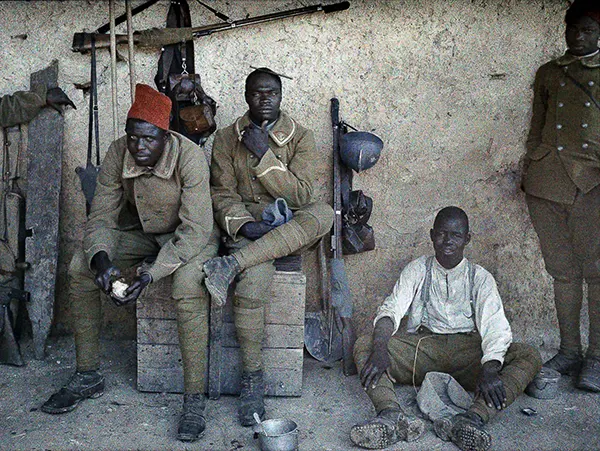
Senegalese soldiers serving in the French Army rest near the Western Front in Alsace.
The first decade of the 20th century saw increasing diplomatic tension between the European great powers. This reached breaking point on 28 June 1914, when a Bosnian Serb named Gavrilo Princip assassinated Archduke Franz Ferdinand, heir to the Austro-Hungarian throne.
Austria-Hungary held Serbia responsible, and declared war on 28 July. Russia came to Serbia’s defense, and by 4 August, defensive alliances had drawn in Germany, France and Britain.
German strategy in 1914 was to first defeat France, then attack Russia. However, this failed, and by the end of 1914, the Western Front consisted of a continuous line of trenches stretching from the English Channel to Switzerland.
The Eastern Front was more fluid, but neither side could gain a decisive advantage, despite a series of costly offensives.
Attempts to bypass the stalemate caused fighting to expand into the Middle East, the Alps, the Balkans and overseas colonies, bringing Bulgaria, Romania, Greece and others into the war.

French machine gunners set up a position amid ruins during the battle of the Aisne in France.
The United States entered the war on the side of the Allies in April 1917, while the Bolsheviks seized power in the Russian October Revolution, and made peace with the Central Powers in early 1918.
Freed from the Eastern Front, Germany launched an offensive in the west in March 1918, hoping to achieve a decisive victory before American troops arrived in significant numbers.
The failure left the German Imperial Army exhausted and demoralized, and when the Allies took the offensive in August 1918, they could not stop the advance.
Between 29 September and 3 November 1918, Bulgaria, the Ottoman Empire and Austria-Hungary agreed to armistices with the Allies, leaving Germany isolated. Facing revolution at home, and with his army on the verge of mutiny, Kaiser Wilhelm II abdicated on 9 November.
The Armistice of 11 November 1918 brought the fighting to a close, while the Paris Peace Conference imposed various settlements on the defeated powers, the best-known being the Treaty of Versailles.
The dissolution of the Russian, German, Austro-Hungarian, and Ottoman Empires resulted in the creation of newly independent states, among them Poland, Czechoslovakia, and Yugoslavia.
Failure to manage the instability that resulted from this upheaval during the interwar period contributed to the outbreak of World War II in September 1939.

Soldiers look at the 45-meter-deep crater left by the detonation by the British of 21 tons of explosives underneath German positions near Messines in West Flanders. One of the largest non-nuclear explosions in history, the blast killed 10,000 soldiers and was heard as far away as Dublin.
The First World War was one of the deadliest conflicts in human history, resulting in an unprecedented number of casualties.
Estimates vary, but it is believed that between 8.5 and 10 million soldiers died during the war, along with an additional 7 million civilians. In total, the war resulted in more than 16 million deaths and 20 million injuries.
The majority of casualties during the First World War occurred on the Western Front, where soldiers on both sides dug in and fought from fortified positions.
The fighting was characterized by brutal trench warfare, where soldiers faced constant artillery fire, machine gun fire, and poison gas attacks. The harsh conditions of the trenches also led to widespread disease and illness.

An Algerian worker in Noyo, France after the retreat of the Germans.
The war also saw significant casualties on the Eastern Front, where Russian forces faced off against the German Empire and its allies. The Eastern Front was characterized by more mobile warfare, but was no less deadly.
The war also had a significant impact on civilian populations, with many people caught in the crossfire and subjected to bombing raids and other forms of violence.
The impact of the First World War on casualties was felt long after the conflict ended. Many soldiers who survived the war returned home with physical injuries and psychological trauma, leading to a wave of disability and mental health issues.
The war also had a significant impact on families and communities, with millions of people around the world losing loved ones and facing the aftermath of the conflict.

A worker from Indochina in Soissons, France.

French soldiers from Africa prepare a meal on the Western Front.

A girl holds a doll next to soldiers’ equipment in Reims, France.

French soldiers of the 370th Infantry Regiment eat soup during the battle of the Aisne.

A French officer inspects the barbed wire around French positions in Soissons.

French soldiers dig through the rubble of a destroyed building in Reims, France.

French soldiers and horses in the cloister of the Abbey de Saint-Jean-des-Vignes in Soissons, which was heavily damaged by artillery fire.
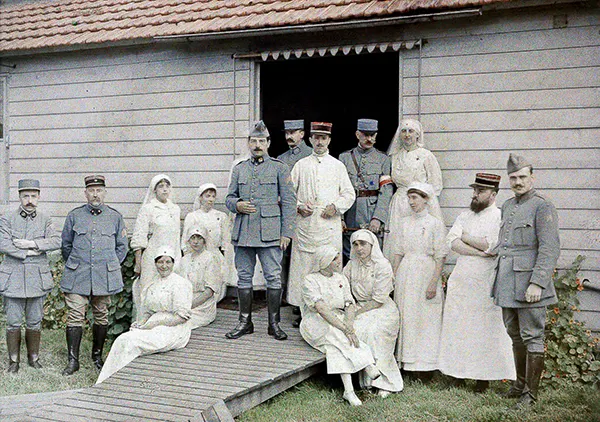
Doctors, nurses and medical personnel in front of field hospital 55 in Bourbourg, France.
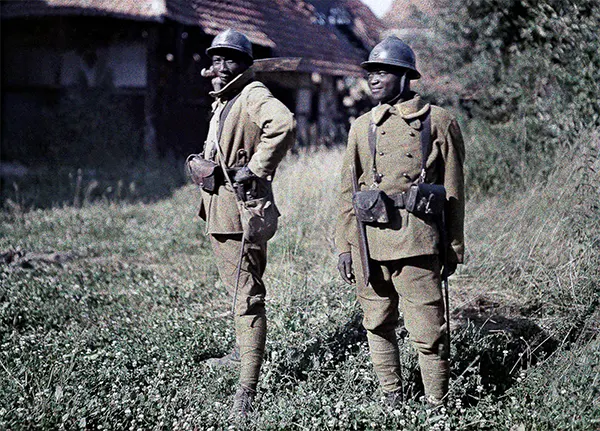
Senegalese Bambara soldiers serving with the French Army in Balschwiller, Alsace.

A camp in Egypt of workers from the British Chinese Labour Corps recruited to participate in the Middle East campaign.
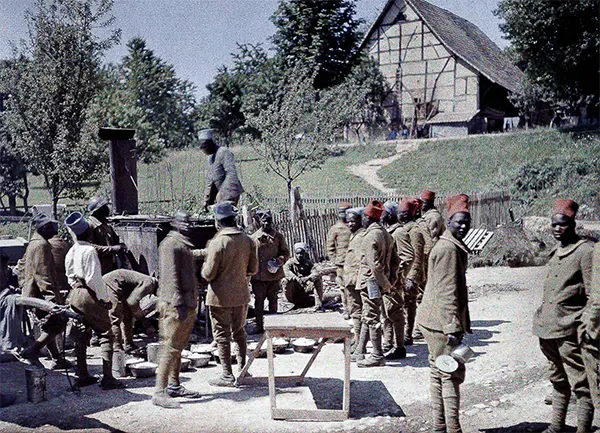
Senegalese soldiers in the French Army line up for lunch in Saint-Ulrich, France.

A French outpost near the front in Hirtzbach, Alsace.

A group of Swiss border guards behind a fence between Switzerland and France.

French soldiers camouflage a 370mm railway gun near the Western Front.

Firefighters attempt to extinguish a fire started by the German bombing of Dunkirk, France.
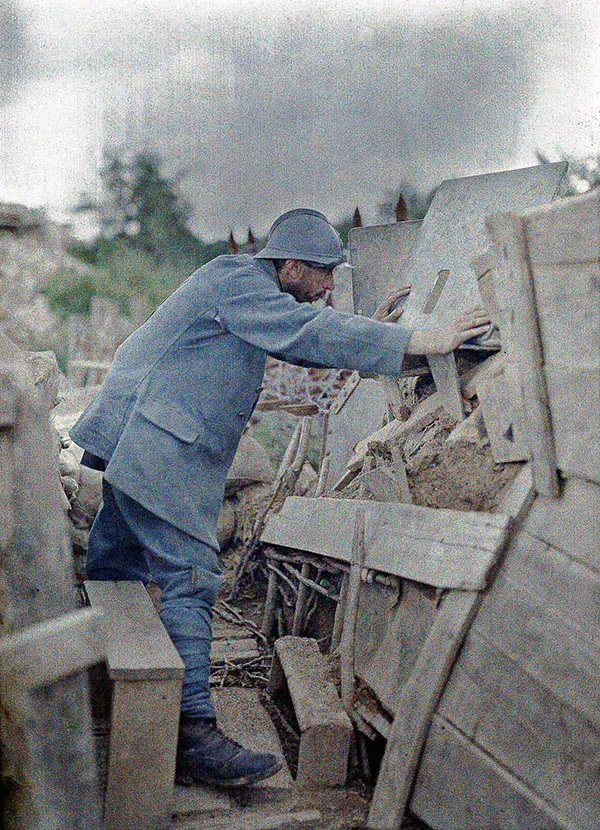
A French soldier peers out from a position on the Western Front in Alsace.

French soldiers in Hirtzbach, Alsace.

An Algerian guard on a bridge in Pommiers, France.

A news vendor in Reims, France.
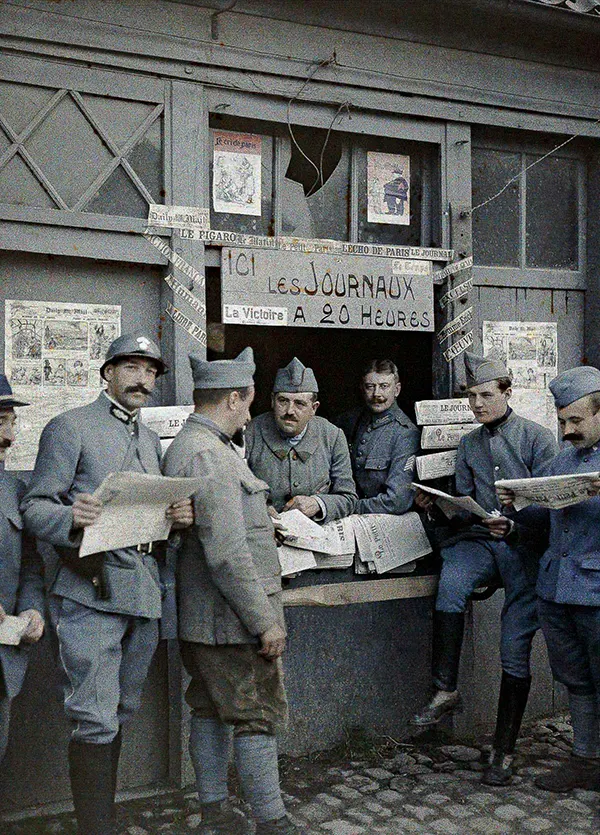
French soldiers read newspapers at a kiosk in Rexpoede, Calais.

A French soldier eats a loaf of bread in Reims, France.
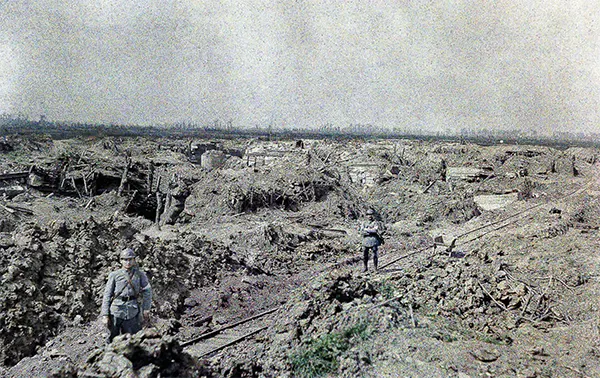
French soldiers stand on a narrow-gauge railroad in an artillery-ravaged battleground in West Flanders.
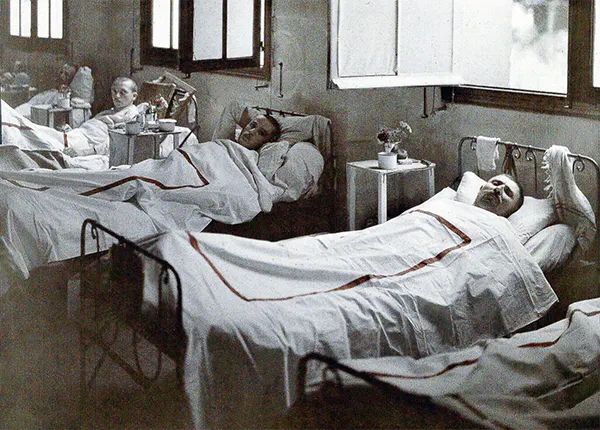
Wounded soldiers from the battlefield near Laffaux at Saint-Paul Hospital in Soissons, France.

A French military cemetery on a hillside in the town of Moosch, Alsace.

View of Verdun after 8 months of bombing, September 1916. (Photo by R. Schultz Collection).

French Gunners receive instruction, 1916. (Photo by TopFoto).

A French soldier with an acoustic listening device capable of tracking aircraft on the Western Front. (Photo by R. Schultz Collection).

The wreck of a German tank, which was destroyed during a battle on the Western Front. (Photo by R. Schultz).
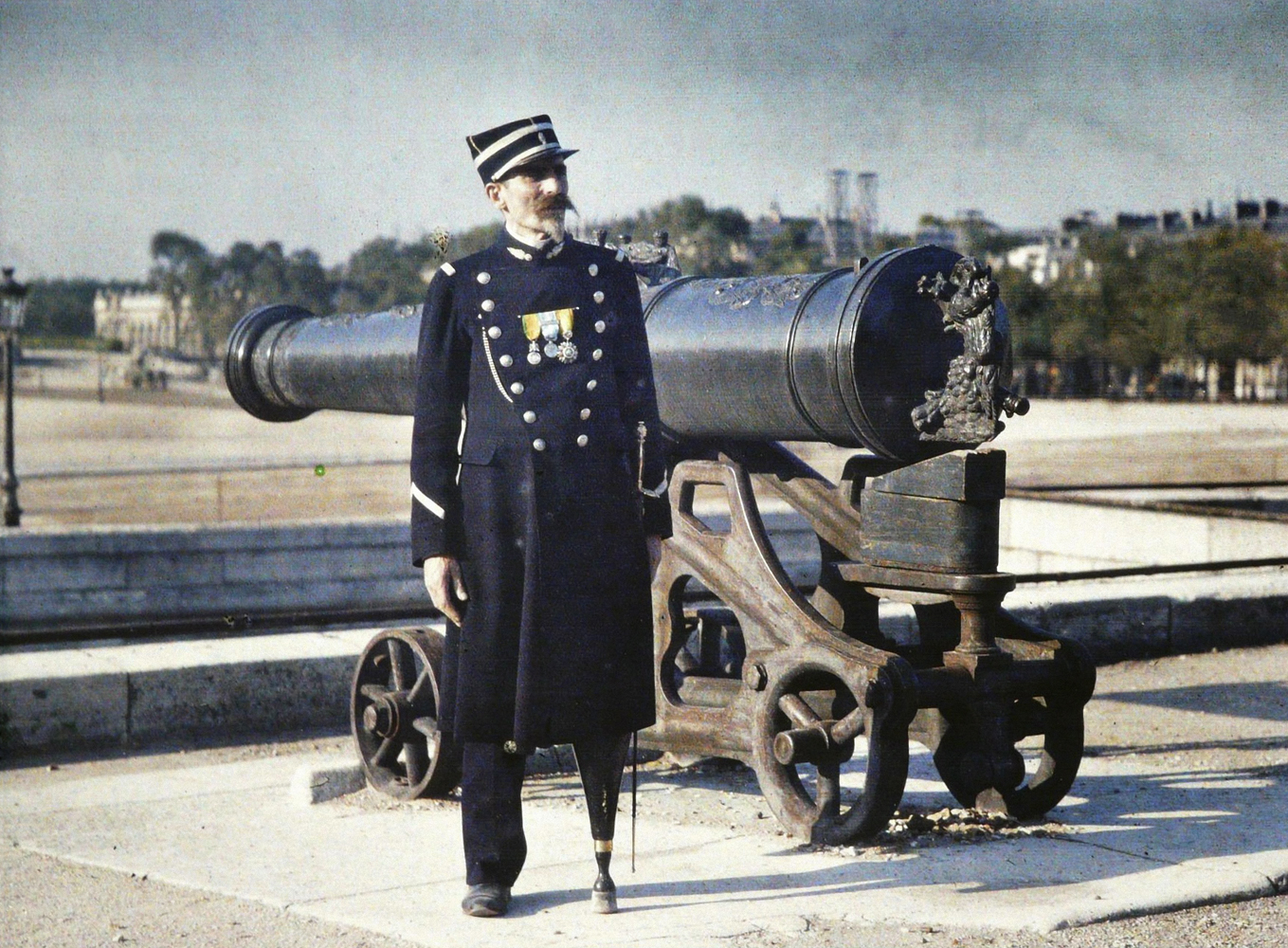
A soldier in uniform with three medals stands next to a cannon in Paris in 1918. His left leg has been replaced by an artificial limb. (Photo by R. Schultz Collection).

Three soldiers look out across a battlefield where wagons are upturned and destroyed and craters break up the mud.

Captain Benjamin H Geary VC, 1st Battalion, East Surrey Regiment being carried in on a stretcher by prisoner bearers at Achiet-le-Petit. 21 Aug 1918.

One poignant photo shows the funeral of Sergeant Henry Nicholas, VC, in World War I, France

20th Battery Canadian Field Artillery, Neuville St. Vaast, April 1917. The horses are soaking and laden with gear.

German soldiers on board a tank that bears the word escapade on the side. Three sit on the top while another leans out of the window.

Nuns lay wreaths in a field of mass graves.

Soldiers at the Battle of Verdun. One sits on the mud as others help the wounded.

A gigantic shell crater, 75 yards in circumference, Ypres, Belgium, October 1917.
(Photo credit: The French side pictures taken by Fernand Cuville / The rest from Royston Leonard; Media Drum World / Wikimedia Commons / Library of Congress / Imperial War Museum).
Updated on: April 11, 2024



